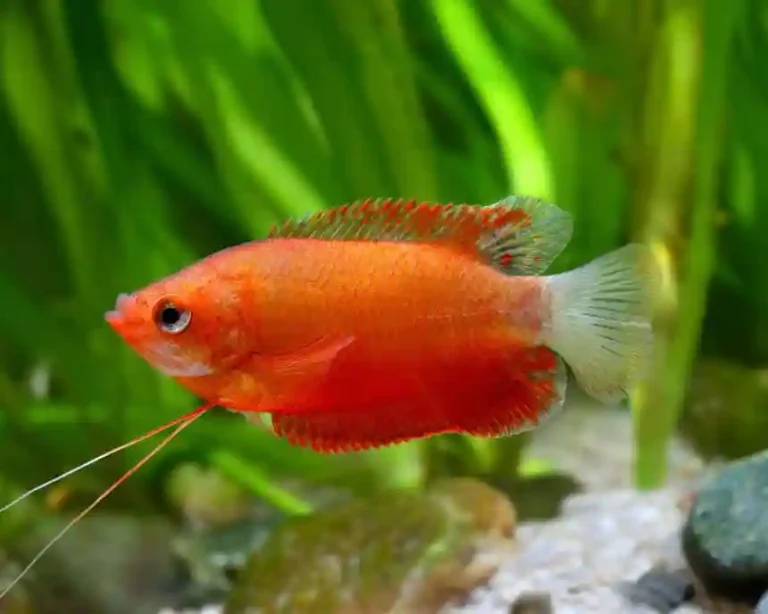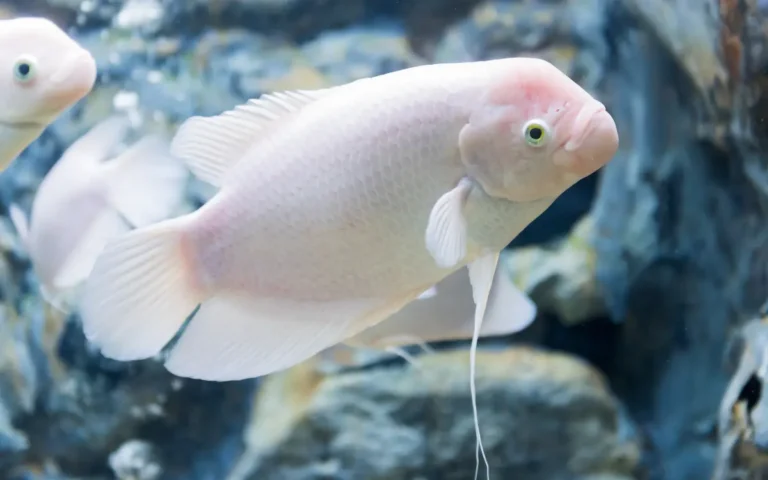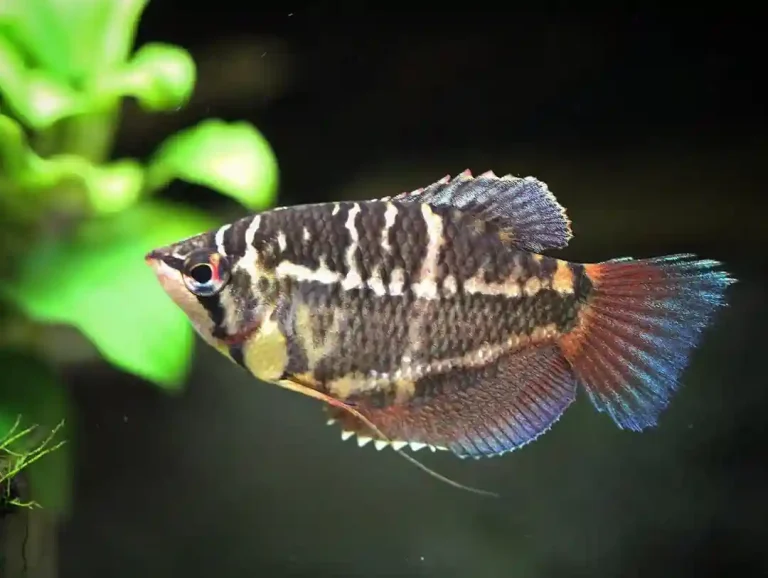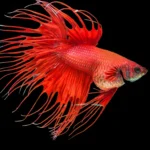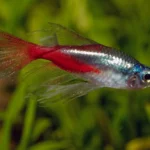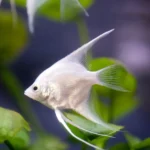The Sparkling Gourami is a peaceful, nano-sized fish with iridescent scales and a quiet charm. In this care guide, you’ll learn how to set up the perfect tank, what to feed them, which tank mates are safe, and whether you can breed them at home.
What Is a Sparkling Gourami?
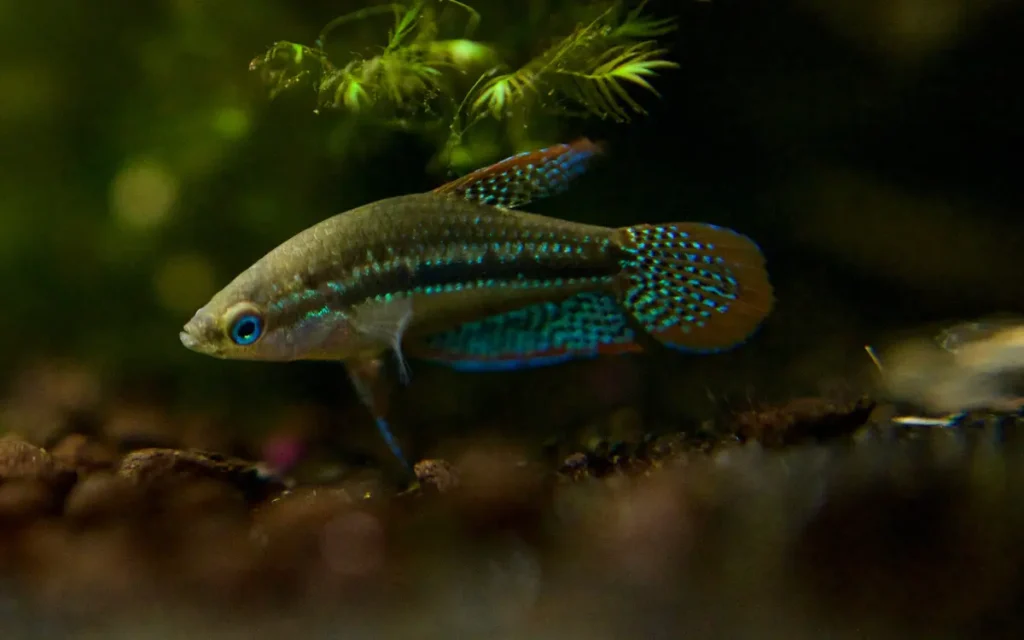
The Sparkling Gourami (Trichopsis pumila) comes from the calm, plant-filled waters of Southeast Asia, including Thailand and Cambodia. These tiny fish grow to about 1.5 inches and have shimmering blue-green bodies with red eyes and subtle patterning. They’re known for making quiet croaking or clicking sounds, especially during courtship or social interactions.
They’re labyrinth fish, which means they can breathe air directly from the surface — making them extra hardy in low-oxygen environments. Sparkling Gouramis are ideal for nano tanks and peaceful planted setups.
Quick Facts
| Feature | Detail |
| Size | 1–1.5 inches |
| Lifespan | 4–5 years |
| Temperament | Peaceful |
| Tank Level | Mid to top |
| Minimum Tank Size | 10 gallons |
| Temperature | 76–82°F |
| pH Range | 6.0–7.5 |
| Water Type | Freshwater |
| Diet | Carnivorous |
Tank Setup
A 10 to 15-gallon tank is perfect for Sparkling Gouramis, especially if you’re keeping a small group. Fill the tank with soft, dark substrate and plenty of live plants, especially floating ones like frogbit or salvinia. They also appreciate leaf litter, driftwood, and shady areas to explore.
Since they come from still or slow-moving waters, use a gentle sponge filter to avoid strong currents. A tight-fitting lid is essential because these gouramis can jump when startled. Keep lighting low to medium to help mimic their natural environment and reduce stress.Want to design a natural layout? Check out our Aquascaping for Beginners guide.
Water Parameters
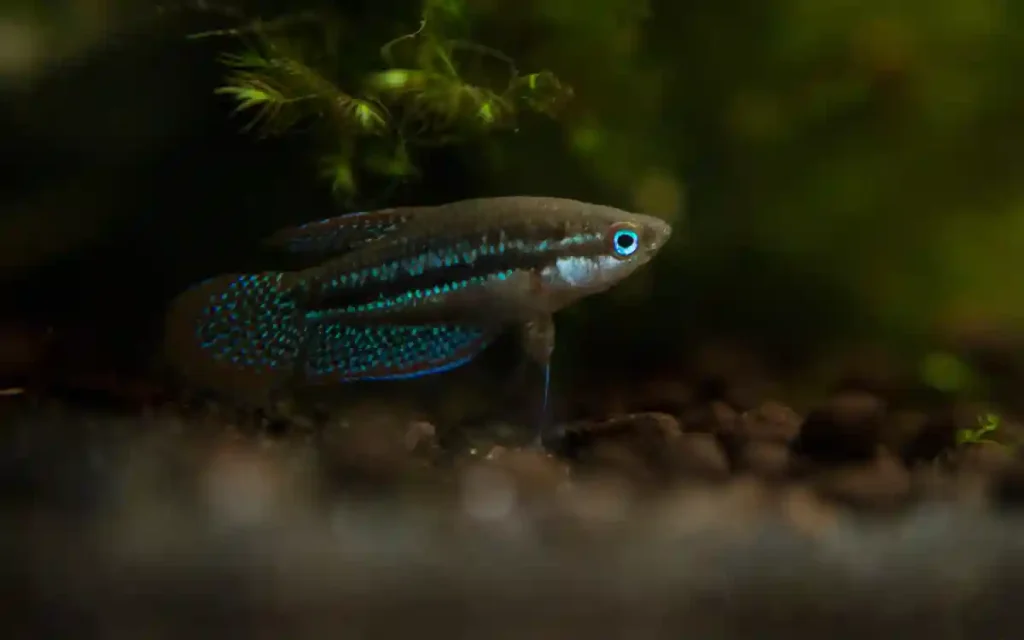
Sparkling Gouramis thrive in soft, slightly acidic water. Use RO water or Indian almond leaves to gently lower pH if needed.
- Temperature: 76–82°F
- pH: 6.0–7.5
- GH: Soft (below 8 dGH)
Change 20–25% of the water weekly, and avoid sudden parameter swings. If you’re already keeping shrimp or bettas, their water requirements overlap well.
Diet and Feeding
These tiny predators love small, live foods. A protein-rich diet keeps their color vibrant and activity levels high.
Good food options:
- Baby brine shrimp
- Daphnia
- Microworms
- Frozen bloodworms
- Micro pellets or crushed flakes (as a staple)
Feed 1–2 times daily in small portions. Uneaten food can pollute water quickly in nano tanks, so avoid overfeeding.
If you’re already feeding algae eaters or bottom dwellers, balance their sinking foods with the gourami’s preference for mid-water bites. See our Algae Eater Guide if you’re mixing species.
Tank Mates for Sparkling Gourami
Sparkling Gouramis are best kept with peaceful, nano-friendly companions.
Good tank mates include:
- Chili Rasboras
- Ember Tetras
- Pygmy Corydoras
- Amano or Neocaridina shrimp
- Snails (like Nerite or Ramshorn)
Avoid fin nippers or fast swimmers like Tiger Barbs or Danios. Larger fish may outcompete or intimidate them.
See our full Community Fish Guide for more tank mate ideas.
Health & Common Problems
Though hardy, Sparkling Gouramis can suffer from:
- Velvet (especially in cool tanks)
- Ich (common in stressed or new arrivals)
- Fin rot (linked to poor water quality)
Look out for signs like clamped fins, flashing, faded color, or refusal to eat. Stable water and hiding spots reduce stress significantly. Quarantine new fish and feed a varied diet to support immunity.
For more health tips, visit Freshwater Fish Diseases.
Breeding Sparkling Gourami
These gouramis are bubble nest builders. Males will blow nests under leaves or floating plants, often near corners.
Steps for breeding:
- Use soft, warm water (around 80°F)
- Add dense floating plants like Amazon frogbit
- Feed live foods to condition pair
- Male guards the nest while female retreats post-spawn
Remove adults after hatching to prevent fry predation. Fry should be fed infusoria or microworms.
FAQs
Can Sparkling Gouramis live alone?
Yes, but they’re more active and natural in pairs or small groups.
Are they aggressive?
No, they are peaceful and shy. Males may display during breeding but rarely fight.
Do they eat shrimp?
Not usually. Large adults might eat baby shrimp, but adults are generally safe with them.
Why do Sparkling Gouramis make noise?
They “croak” or “click” using a specialized muscle — often during courtship or territory defense.
Can they live with bettas?
It’s risky — both are labyrinth fish and may display aggression. Better to avoid mixing.
Final Thoughts
Sparkling Gouramis are one of the most underrated nano fish you can keep. Their peaceful nature, shimmering colors, and unusual vocal behavior make them a joy to watch in a planted tank. With stable water, good tank mates, and plenty of hiding spots, they’ll reward you with years of beauty and fascinating behavior.

